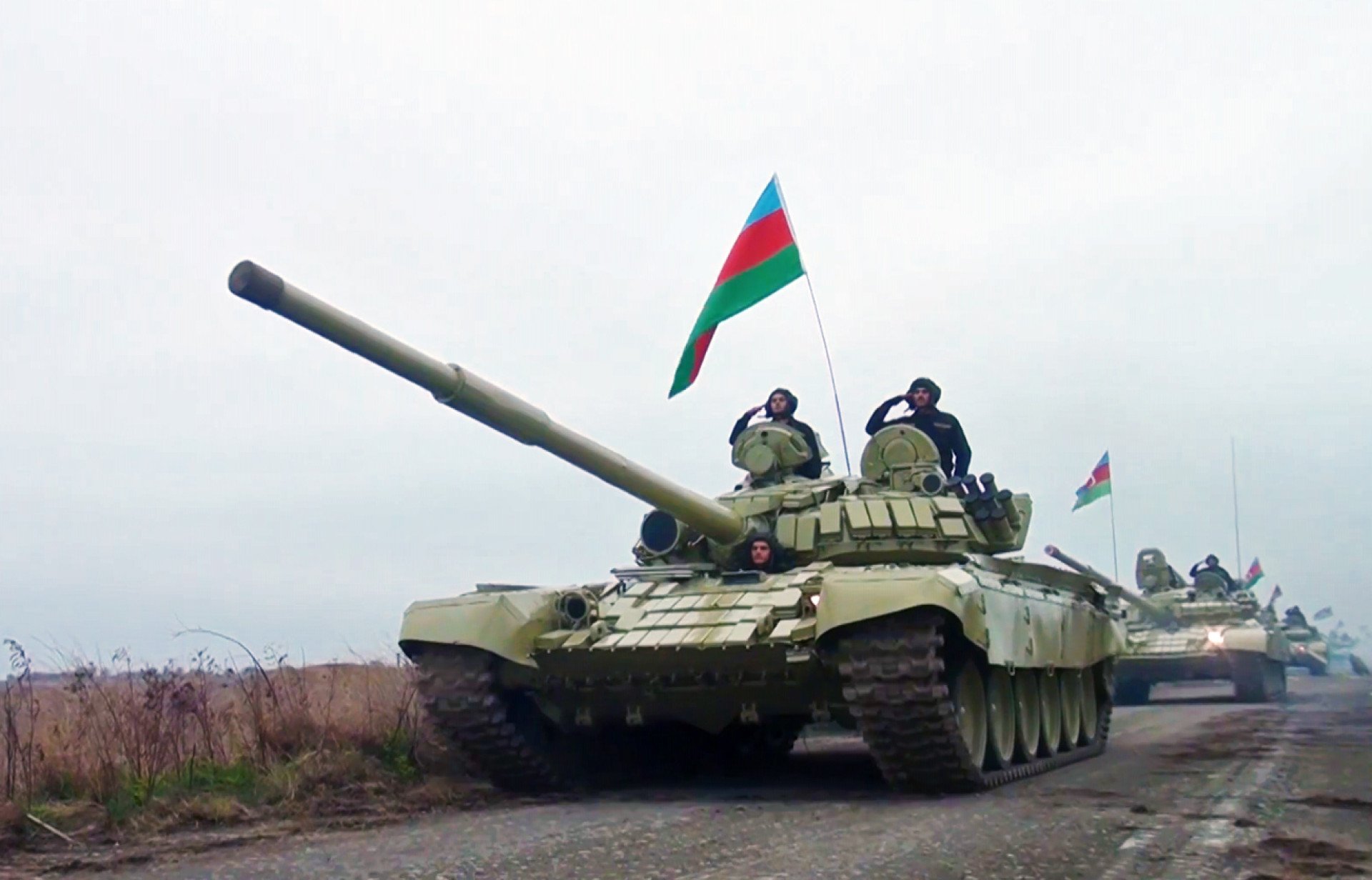Azerbaijan’s Defense Realignment: Transferring Russian-Origin Military Hardware to Ukraine

Azerbaijan's Strategic Shift: Transferring Russian-Origin Military Hardware to Ukraine
Recent developments indicate that a significant transfer of military assets, previously acquired from the Russian defense sector, is under consideration by a South Caucasus nation in support of Ukraine. This maneuver involves equipment valued in the billions, highlighting a strategic recalibration in regional military alignments. Concurrently, this country is pursuing a gradual transition from Russian to Turkish standards for its armed forces, underscoring a shift in defense procurement and interoperability.
Military inventories currently operated include advanced main battle tanks, infantry fighting vehicles, and armored personnel carriers, all of Russian origin. The arsenal extends to sophisticated anti-tank missile systems, multiple types of self-propelled artillery, heavy flamethrower systems, multiple-launch rocket systems, surface-to-air missile units, and integrated air-defense gun-and-missile systems. The blend of this hardware defines the current combat capabilities and shows reliance on legacy platforms and modernized Russian systems amid evolving defense dynamics.
Current Fleet Composition and Reserve Assets
The operational ground forces deploy T-90S main battle tanks, a highly capable platform with modern fire control and protection systems. Mechanized infantry is supported by BMP-3 fighting vehicles, known for their firepower and mobility, alongside BTR-82A armored personnel carriers which provide troop transport and battlefield versatility. Anti-tank roles rely on systems such as the Khrizantema-S and Kornet, both potent in engaging armored threats at extended ranges.
Artillery support combines 152mm 2S19M1 self-propelled howitzers with 120mm Vena mortars, providing flexible fire support. The presence of TOS-1A heavy flamethrower systems and Smerch multiple-launch rocket systems signifies a robust capability for area saturation and destruction of fortified positions. Air defense integrates S-300PMU2 Favorit surface-to-air missile systems and Pantsir-S1 gun-missile complexes, ensuring a layered defensive umbrella against aerial threats.
Additionally, a variety of Soviet-era platforms remain in reserve, including T-55 and T-72 tanks, earlier generation armored carriers BTR-60 and BTR-70, as well as infantry vehicles BMP-1 and BMP-2. These stocks, complemented by MT-LB transporters and assorted munitions, represent a strategic depth and fallback capability within the military's structure.
Aerial Capabilities and Emerging Transitions
On the tactical aviation front, there are indications that fighter jets of MiG-29 designation could be transferred in the near future. A parliamentary figure has mentioned readiness to hand over these aircraft contingent upon the induction of newer multirole fighters sourced from Pakistan, anticipated to join service in 2025. This reflects a prudent approach to maintaining air combat capacity while modernizing the fleet and diversifying defense partnerships.
The underlying trajectory points to a deliberate transition away from legacy Russian platforms by adopting Turkish-designed systems and standards. This transition not only reduces reliance on longstanding suppliers but also strengthens military interoperability with regional allies. The strategic realignment is exemplified by expanding bilateral defense cooperation and institutionalized agreements focused on joint exercises, technology transfers, and industrial collaboration.
Implications and Regional Context
The decision to reallocate these military resources signals a nuanced geopolitical posture, highlighting complex interactions among neighboring states and external powers. The provision of advanced weaponry aligns with broader regional and international security dynamics, where arms transfers are closely scrutinized amid ongoing conflicts and strategic competition.
Additionally, the planned adoption of Turkish systems and the gradual modernization of ground and air assets reflect an evolving defense doctrine, emphasizing versatility and adaptability. Moving towards a diversified equipment base enables easier integration with allied support frameworks and facilitates access to cutting-edge technology and logistics networks.
In summary, these developments denote an important phase for the country's armed forces as it navigates shifting security landscapes. The transfer of previously acquired Russian-origin military equipment to Ukraine, combined with efforts to realign toward Turkish models and partnerships, encapsulate a deliberate strategy aimed at reshaping defense capabilities while contributing to broader geopolitical objectives.
